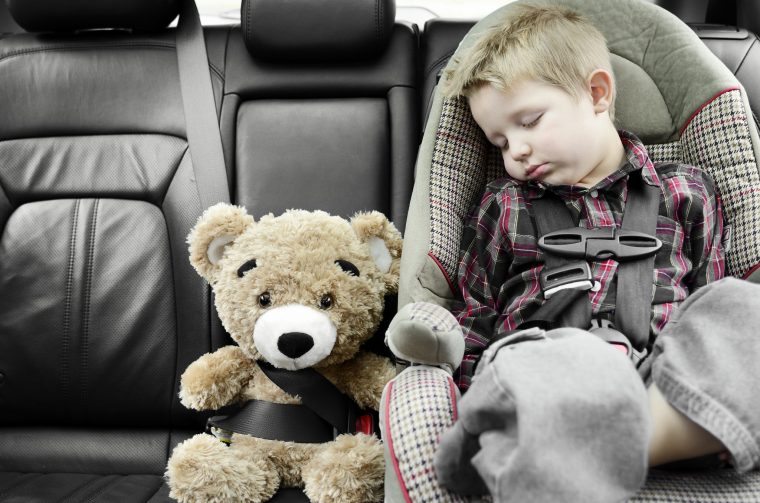Make Sure All Children are Riding Safely on Every Trip

How often have we heard someone, including parents and caregivers, say, “I was just going around the corner!” Parents who would normally take precautions to make sure their children are safe are often tempted to allow a lapse in safety when the risk is perceived as low.
The myth that traveling a short distance does not pose a risk, is just that — a myth. Surveys show that most crashes do occur close to home. A recent crash in a Texas city where an unrestrained 4-year-old was killed is a tragic reminder of the importance of keeping children riding safely restrained on every trip.
Traveling close to home can give a false sense of comfort and decrease our vigilance as drivers. But, city streets pose more dangers — including busy intersections and vehicles and pedestrians unexpectedly entering the roadway. Highways and freeways usually make drivers more alert to driving conditions and also incorporate safety features, such as traffic moving in the same direction, break-away barriers, lane separators, and controlled access.
Children are at greater risk than adults in a vehicle crash. In fact, motor vehicle crashes are one of the leading causes of death for children 14 and under. Safety belts and car seats are the single most effective tool in reducing these deaths and injuries. Unfortunately, in 2016, less than half of the children killed in vehicle crashes in Texas were known to be restrained.
Parents and caregivers are reminded that for a car seat to protect a child, it needs to be the right seat for the child’s age, weight, height, and developmental stage. It also needs to be used correctly and installed securely in the vehicle. Although parents always want to protect their children, studies show that nationally, 3 out of 4 car seats are not used correctly.
It is important to keep children rear-facing until at least age 2 or until the limit of their rear-facing convertible seat, which is usually 40 pounds or more. Also, children should stay in a 5-point harness system until they are ready to ride in a booster seat. Booster seats are for children who are at least age 4 and 40 pounds or more and mature enough to sit still in a booster. Finally, keep children in a booster seat until the seat belt fits correctly. This is usually sometime between ages 8 and 12. The average child fits in a seat belt at age 11.
The Texas A&M AgriLife Extension Passenger Safety Project and Community Health Agent Marisa Dimas in Duval County reminds parents and caregivers to get a free safety seat inspection from a certified child passenger safety technician.
A technician can provide hands-on advice and instruction. Make sure your children are safe and you are in compliance with the current child safety seat law in Texas. The law requires all children under age 8, unless taller than 4-feet-9-inches, to be in a child safety seat system, which includes traditional child safety seats with harnesses and booster seats. Keep in mind that the law is always the minimum. Car seat technicians will be able to provide education on best practice for keeping children riding safely in vehicles. Visit: HYPERLINK “http://buckleup.tamu.edu” http://buckleup.tamu.edu to find a certified technician in your area.
Older Children – Seat Belts
When children are old enough and large enough to use the vehicle seat belt alone, they should always use lap and shoulder seat belts for the best protection.
Remember: All child passengers under age 13 should ride securely restrained in the back seat, where they are safest. Buckle up your children and everyone in the vehicle — every trip, every time!















